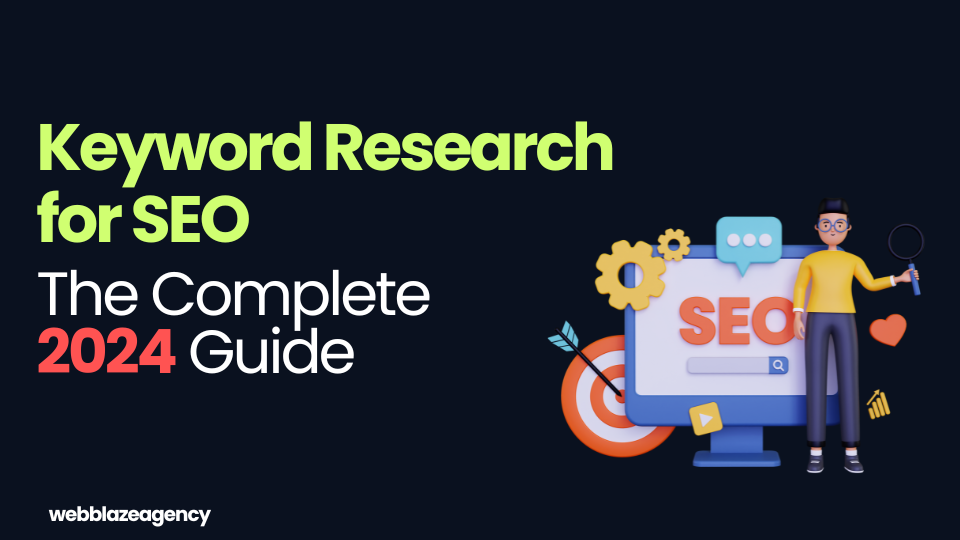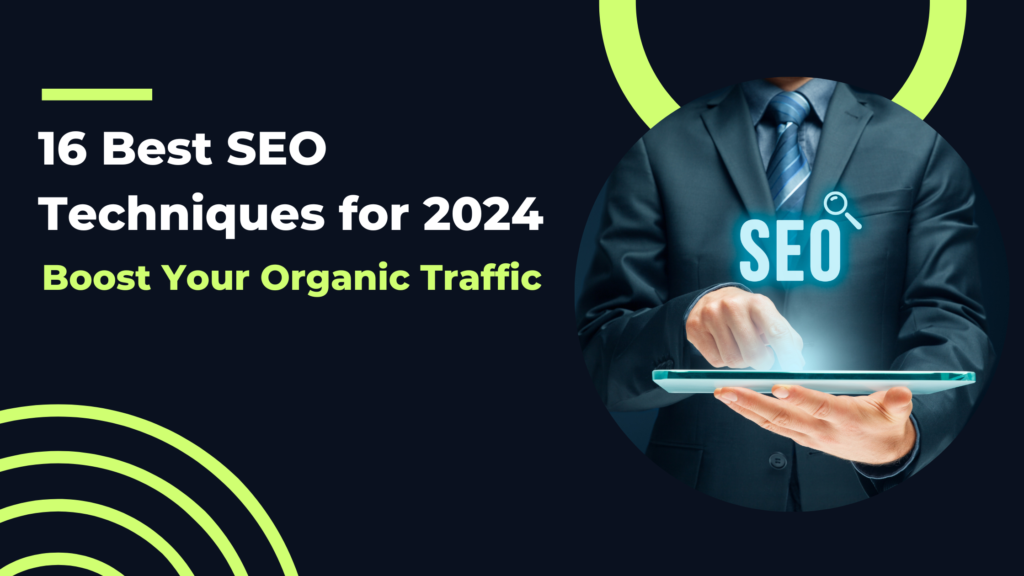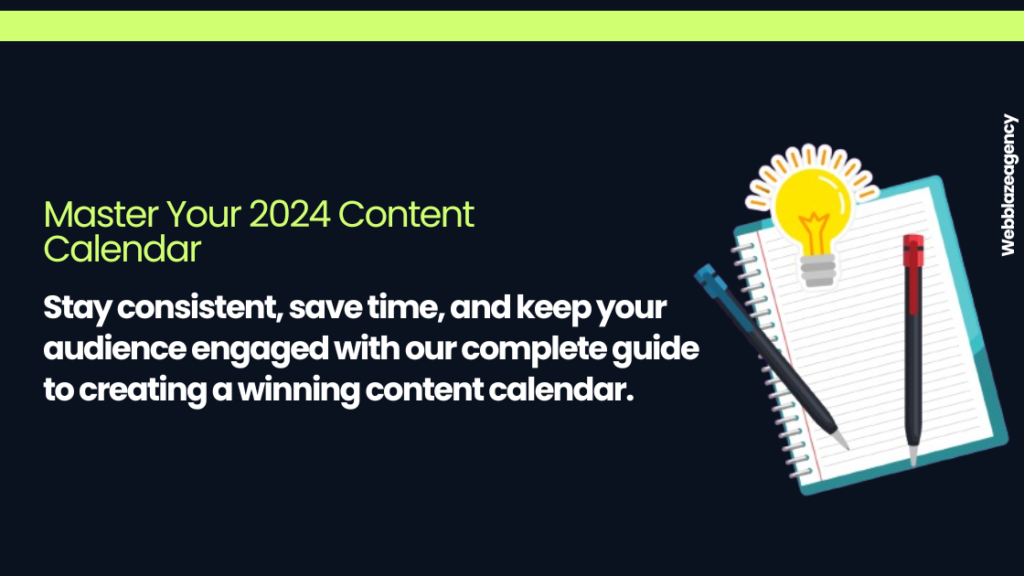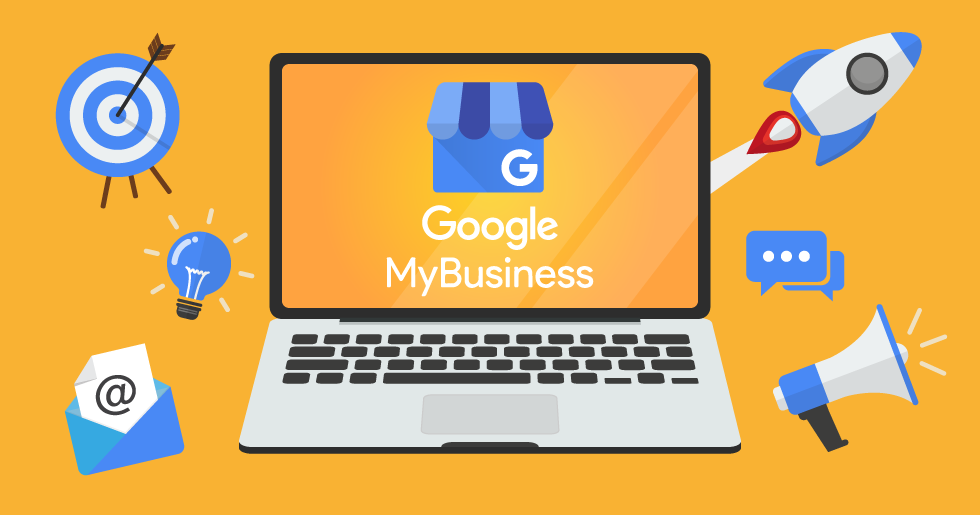AI Tasking Hack: How Entrepreneurs Are Saving 3 Days a Week (Without Hiring More Staff!)

The AI Revolution That’s Changing the Way We Work In today’s fast-paced business world, AI automation is no longer a futuristic concept—it’s a necessity. Entrepreneurs and business owners who leverage AI tasking are seeing massive time savings, increased efficiency, and higher profits without expanding their teams. This strategy, made famous by business expert Ben Angel, is helping professionals reclaim up to three days a week by automating repetitive tasks, optimising sales funnels, and generating leads effortlessly. If you’re still stuck in outdated workflows, it’s time to embrace AI tasking and unlock the potential of intelligent automation. In this guide, we’ll explore: ✅ What AI tasking is and why it’s trending✅ How AI can help entrepreneurs save time and scale faster✅ The best AI tools for content marketing, sales, and customer engagement✅ A step-by-step strategy to implement AI into your business Let’s dive in. What Is AI Tasking? AI Tasking is the strategic use of artificial intelligence to handle tasks that would otherwise consume hours of manual work. It involves leveraging AI-powered tools to: By delegating repetitive work to advanced AI systems, businesses can scale faster, improve efficiency, and focus on high-value tasks—all while saving valuable hours each week. Why AI Tasking Is a Game-Changer for Entrepreneurs 1. Saves Time & Boosts Productivity AI-powered systems can complete tasks in seconds that would take a human hours. With automation, businesses can: The result? More time to focus on strategy and growth. 2. Increases Revenue Without Hiring More Staff Many businesses hesitate to scale because of hiring costs. AI tasking eliminates this challenge by acting as a virtual workforce, helping companies grow revenue without increasing payroll expenses. For example, AI-powered email marketing tools can send personalised messages to thousands of potential customers, increasing conversion rates without manual effort. 3. Improves Customer Engagement & Sales AI chatbots and virtual assistants are revolutionising customer service. Instead of waiting on hold, customers get instant, AI-powered responses, boosting satisfaction and improving conversion rates. AI tools also analyse customer behaviour, helping businesses target the right audience with the right offer at the right time. The Best AI Tools for Business Growth If you’re ready to start AI tasking, here are some of the best AI tools that can transform your business: 1. AI for Content Marketing 🔹 SurferSEO – Automates SEO optimisation for blogs🔹 Jasper AI – Writes high-quality, SEO-friendly content in seconds🔹 Grammarly – Enhances readability and grammar for professional content Using these tools, businesses can boost organic traffic and rank higher on Google without hiring content teams. 2. AI for Lead Generation 🔹 HubSpot CRM – AI-driven lead tracking and automation🔹 Apollo.io – Automates cold outreach with AI-powered insights🔹 Seamless.AI – Finds and verifies sales leads instantly These tools help businesses generate and convert leads automatically, increasing revenue. 3. AI for Customer Engagement 🔹 ChatGPT & Chatbots – Provide instant customer support 24/7🔹 ManyChat – AI-powered chatbot for Facebook & Instagram🔹 Tidio – Converts website visitors into paying customers using AI With these tools, businesses can improve customer experience, increase conversions, and reduce manual workload. How to Implement AI Tasking in Your Business (Step-by-Step Guide) Want to start saving time and boosting revenue with AI? Follow this simple step-by-step strategy: Step 1: Identify Repetitive Tasks Start by listing time-consuming, repetitive tasks in your business, such as:✅ Writing emails✅ Scheduling social media posts✅ Researching content ideas✅ Answering common customer queries These tasks are perfect for AI automation. Step 2: Choose the Right AI Tools Based on your needs, select AI-powered tools that can: Use the recommended tools above to get started. Step 3: Automate Workflows Set up AI systems to run tasks without manual intervention. Step 4: Track & Optimise Regularly monitor AI performance and tweak settings to improve results.✅ Check chatbot response rates✅ Analyse AI-generated email open rates✅ Refine AI-generated content based on SEO rankings Step 5: Scale Your Business With AI handling routine work, focus on business growth by:🔥 Developing new strategies🔥 Expanding into new markets🔥 Strengthening customer relationships By fully integrating AI into your business, you’ll save time, increase efficiency, and maximise revenue—without burning out. The Future of AI Tasking: Why You Need to Act Now AI is not a temporary trend—it’s the future of business. Companies that fail to adopt AI automation risk falling behind while competitors scale effortlessly. If you haven’t started AI tasking, the time to act is NOW. The longer you wait, the more opportunities you lose to businesses that are already leveraging AI automation for faster growth. Final Thoughts: Is AI Tasking the Key to Your Success? AI tasking isn’t just a productivity hack—it’s a business growth strategy. By automating content creation, lead generation, and customer engagement, entrepreneurs can save three days a week while increasing revenue. The best part? You don’t need technical skills or a huge budget. With user-friendly AI tools, even small businesses can compete with industry giants. 🔹 Want to save time, boost sales, and scale faster? Start AI tasking today.🔹 Looking for the best AI tools to automate your business? Try SurferSEO, Jasper, ManyChat, and HubSpot. AI tasking is just the beginning! To maximise your efficiency and drive more sales, check out our expert-curated list of the best AI marketing tools that can automate your workflow and scale your business faster than ever. 🚀
The Top 10 AI Marketing Tools for 2025

These AI tools could take your business to the next level – here’s how! AI is no longer just a buzzword – it’s revolutionising marketing. Whether you’re a solo entrepreneur or running a global brand, AI-powered tools can help you reach more people, save time, and increase sales. From predicting customer behaviour to automating your marketing efforts, these tools make everything smoother, smarter, and more efficient. Let’s dive into why AI is changing the game – and the 10 tools you need to start using today. 🚀 Why AI Marketing Tools Are a Total Game-Changer Marketing is all about data. But sifting through endless numbers and making sense of it all? That’s where AI steps in. These tools do the heavy lifting – analysing trends, predicting customer behaviour, and even generating content – all at lightning speed. The best part? They work with minimal effort from you. ✅ Want to personalise ads? AI handles it.✅ Need to predict what customers will buy next? Easy.✅ Spending too much on a marketing team? Let AI take over the repetitive tasks. From crafting content to running high-converting ads, these tools can help you market smarter, not harder. Here are the top AI marketing tools that are making waves in 2025. 🔥 The 10 Best AI Marketing Tools Right Now 1. UpGrow – Grow Your Instagram Like a Pro 📈 Struggling to build your Instagram following? UpGrow uses AI to target the right audience based on location, age, and interests. Unlike dodgy bots, it connects you with real followers who actually engage with your content. No more guessing hashtags or fighting the algorithm – UpGrow has it covered. 2. Genius.AI – Your Personal Marketing Assistant 🤖 Think of Genius.AI as your AI-powered marketing expert. It helps craft powerful campaigns, write high-converting sales copy, and even handle customer interactions. Plus, it works in multiple languages, making global marketing effortless. 3. Jasper – The AI Writing Genius ✍️ Need content fast? Jasper can create blogs, emails, social media posts, and ads in minutes. Just enter a few keywords, and Jasper will generate high-quality content that sounds like a pro wrote it. Fast, efficient, and incredibly smart – Jasper is a game-changer for content creators. 4. MarketMuse – Your Content Strategy Expert 🎯 MarketMuse does all the research for you – scanning competitors, identifying content gaps, and even drafting your first version. Whether you’re writing a blog or optimising a landing page, this tool ensures your content is strategic and SEO-friendly. 5. GetResponse AI – Smarter Email Marketing 📩 Struggling to get people to open your emails? GetResponse AI writes compelling subject lines and tailored content designed to boost open rates and conversions. It’s like having an email marketing expert on your team – but without the hefty price tag. 6. AdCreative AI – Ads That Actually Convert 🎨 AI-generated ads that grab attention and drive sales? That’s exactly what AdCreative AI delivers. Simply upload your logo and brand colours, and it will generate dozens of high-performing ad creatives. It even analyses your competitors’ ads, so you can see what’s working and outdo them. 7. Creatify – Video Ads in Seconds 🎥 No editing skills? No problem. Creatify transforms product links into engaging video ads with voice-overs in just a few clicks. It’s the ultimate tool for brands that want to step up their video marketing without spending hours on editing. 8. Semrush – The SEO Powerhouse 🔍 Want to dominate Google search results? Semrush helps you track your rankings, analyse competitors, and optimise your content for better visibility. Whether you run a blog or an e-commerce site, this tool ensures your business stays ahead. 9. Plus AI – Create Stunning Presentations Instantly 📊 Need a presentation ASAP? Plus AI works within Google Slides to generate professional decks in minutes. Just enter a prompt, and it will design sleek, engaging slides ready to impress. Perfect for pitches, client meetings, or internal reports. 10. Scalenut – SEO-Optimised Content on Autopilot 📝 Scalenut is like having an entire content marketing team in one tool. It finds the best keywords, generates SEO-friendly articles, and even scores your content in real time. If you’re serious about ranking higher on Google, this tool is a must-have. ⚡ Why AI Marketing Is the Future AI isn’t just a cool tech trend – it’s revolutionising marketing. These tools make it easier than ever to automate tasks, boost efficiency, and get real results. Whether you’re creating content, running ads, or tracking SEO, AI can help you work smarter, not harder. 🚀 Ready to step up your marketing game? Try one of these AI tools and see the difference for yourself! Ready to take your marketing to the next level? Try one of these AI tools and see the difference for yourself. Want to go even deeper into what drives customer decisions? Check out our guide on Psychological Triggers to Boost Sales and learn how to influence buying behavior effectively! 💬 Which one are you most excited to try? Let us know in the comments!
The New Rules of B2B Lead Generation: Are You Keeping Up?

The game has changed. B2B buyers are no longer passive listeners sitting through endless sales pitches. They’re informed, independent, and tougher to impress. Businesses that fail to adapt are being left behind, while those embracing this shift are thriving. So, what’s different? Let’s break it down. B2B Buyers Are in Control Gone are the days when buyers relied solely on sales teams for information. Thanks to the internet, they can research everything they need on their own. By the time they engage with your business, they’ve already made up their minds about what they want. What Does This Mean for You? Your lead generation strategy must do more than capture their attention—it needs to offer value. You must show that you’re more than just another checkbox in their research process. It’s a Team Decision Now B2B buying decisions rarely come down to one person. Committees are calling the shots, and each member has their own priorities. Your messaging must address all these perspectives to win them over as a team. The Digital Experience Matters Modern buyers have sky-high expectations for digital interactions. They want fast, seamless, and personalized experiences across all devices. If not, potential buyers will leave—and they won’t come back. Trust is Everything Buyers today are cautious. They won’t share their details unless they see real value in return. Want their email address? Offer something that’s worth it: Be transparent about how their data will be used. People value honesty, and building trust is key to generating quality leads. Winning Lead Generation Strategies for 2025 Here are four must-dos to stay ahead: Looking Ahead to 2025 As technology evolves, so do buyer expectations. With stricter privacy laws, smarter consumers, and AI-driven tools, businesses must strike a balance between automation and the human touch. Lead generation is no longer just about collecting emails. It’s about understanding buyers’ needs, building relationships, and offering value at every step of their journey. If you’re still relying on outdated tactics like “Sign up for our newsletter,” it’s time to rethink your strategy. The future belongs to businesses that give buyers what they want—on their terms. Want to understand how different generations engage with content and how it influences buying decisions? Check out our in-depth guide here.
7 Psychological Triggers That Can Skyrocket Your Clicks and Sales

Getting someone to click on your link or buy your product isn’t about luck—it’s about understanding what makes people tick. Neil Patel Academy recently revealed research on seven psychological triggers that significantly increase click-through rates (CTR) and drive more sales. These triggers tap into human emotions and instincts, guiding behaviour in subtle but powerful ways. Some create trust, others spark curiosity, and a few ignite a sense of urgency. This guide will walk you through how to use them effectively to transform your marketing. What Are Psychological Triggers? Psychological triggers are emotional cues that encourage people to take action. Whether it’s making a purchase, subscribing to a service, or even just clicking a link, these triggers work because they connect with how we naturally make decisions. Neil Patel’s research shows that each trigger has a unique strength—some are great at boosting clicks, while others help close sales. The key is knowing which to use and when. The 7 Triggers That Drive Results (And How to Use Them) 1. Social Proof CTR Increase: +4% | Purchases: +2% Humans are hardwired to follow the crowd. When people see others enjoying your product or service, they’re more likely to trust it and take action themselves. How to Use Social Proof: Example: Airbnb displays user reviews and ratings on every listing, helping travellers feel confident in their decision. 2. Scarcity CTR Increase: +9% | Purchases: +7% People don’t want to miss out on something special. Scarcity taps into FOMO (fear of missing out), pushing people to act quickly before it’s too late. How to Use Scarcity: Example: Booking.com uses scarcity perfectly by showing “Only 1 room left at this price!” on hotel listings. 3. Urgency CTR Increase: +11% | Purchases: +6% Urgency creates a sense of now-or-never. It compels people to act immediately instead of waiting, making it a top performer for driving clicks and sales. How to Use Urgency: Example: Retailers like ASOS frequently run flash sales, pairing tight timeframes with discounts to spark action. 4. Money-Back Guarantee CTR Increase: +6% | Purchases: +8% Buying anything online involves a leap of faith. A money-back guarantee removes the risk and gives people the confidence to try your product or service. How to Use a Money-Back Guarantee: Example: Casper offers a 100-night mattress trial, allowing customers to return their mattress for free if they’re not satisfied. 5. Instant Gratification CTR Increase: +5% | Purchases: +4% People love quick results. When you offer instant benefits or rewards, they’re more likely to act. How to Use Instant Gratification: Example: Netflix promises “Watch instantly” to new users who sign up for their streaming service. 6. Authority CTR Increase: +3% | Purchases: +1% People trust experts and credible sources. If your product is backed by authority, it’s much easier to win over potential customers. How to Build Authority: Example: Many skincare brands feature labels like “Dermatologist Approved” to reassure customers. 7. Curiosity CTR Increase: +7% | Purchases: +2% Curiosity drives clicks. When you leave people wanting to know more, they’re far more likely to engage with your content or offers. How to Spark Curiosity: Example: BuzzFeed thrives on curiosity with titles like “10 Things You Didn’t Know You Needed Until Now.” Combining Triggers for Better Results Using multiple triggers together can amplify their impact. For example: Be careful not to overdo it, though. Too many triggers can overwhelm your audience and make your message feel inauthentic. Focus on one or two triggers that best suit your campaign. How to Get Started FAQs About Psychological Triggers Can I use more than one trigger in a campaign? Yes! Combining triggers like urgency and scarcity often creates a stronger response. Just keep the message clear and focused. Which triggers work best for eCommerce? Urgency and scarcity work wonders for sales, while social proof helps build trust. Money-back guarantees also help reduce hesitation. Are these triggers relevant for B2B marketing? Absolutely. Authority, social proof, and money-back guarantees are especially effective in B2B, where trust and credibility matter. Wrapping Up Psychological triggers aren’t just clever tactics—they’re grounded in understanding human behaviour. Whether you’re driving clicks or closing sales, these strategies can make all the difference in your campaigns. Start by trying one or two triggers in your next email, ad, or landing page. Experiment, measure the results, and refine your approach. Soon enough, you’ll see how these simple changes can have a huge impact on your bottom line. Which trigger will you test first? Let us know how it works for you!
Mastering Instagram’s Video Quality Update: A Complete Guide for Brands

Instagram is rolling out a game-changing update: video quality will now depend on engagement. According to Instagram Head Adam Mosseri, videos that capture attention and spark interaction will get better visibility and quality. On the flip side, videos with low engagement may see their quality—and reach—reduced. This update is not just a tweak; it’s a call for brands to rethink their content strategies. To stay ahead, brands must focus on creating videos that resonate with their audience and drive meaningful interactions. In this guide, we’ll break down the implications of this update and share strategies to help you thrive under the new rules. What Is Instagram’s Video Quality Update? Here’s how the new policy works: Why is Instagram doing this? With billions of videos uploaded daily, the platform needs to prioritize content that users enjoy. This approach is similar to what platforms like YouTube and TikTok have been doing for years. Why This Update Matters for Brands and Creators Opportunities Challenges How This Update Aligns with Social Media Trends Instagram isn’t the first platform to tie content visibility to engagement. Here’s how it compares to industry leaders: What YouTube Teaches Us Takeaway: Treat your Instagram videos like a mini-series. Post consistently and build a connection with your audience over time. What TikTok Teaches Us Takeaway: Don’t be afraid to experiment with trending audio or informal content that shows your brand’s personality. How Brands Can Thrive Under Instagram’s New Policy 1. Know Your Audience Understanding your audience is crucial for engagement. Use Instagram Insights to identify what types of videos perform best and focus on those themes. Example: A travel company notices their audience loves short packing hacks. They double down on these videos, ensuring each one includes tips viewers can use immediately. 2. Prioritize Production Quality While authenticity is key, poor-quality visuals or audio can harm engagement. Ensure your videos are clear, well-lit, and easy to watch. Pro Tip: Use tools like CapCut, Canva, or InShot to enhance your videos without breaking the bank. 3. Drive Engagement With CTAs Videos that invite interaction will perform better. Use calls to action (CTAs) to encourage viewers to comment, share, or save your content. Example: A fitness coach posts a video of simple stretches with the caption, “Which stretch is your favorite? Tell us in the comments!” 4. Post at the Right Time Timing is everything. Use your analytics to find when your audience is most active and schedule posts accordingly. Example: A fashion brand notices their followers engage most between 6–8 PM and ensures their posts go live during that window. 5. Stay Trend-Savvy Leverage trending audio, hashtags, or themes to keep your content fresh and relevant. Platforms like TikTok Trends or Instagram Explore can help you identify what’s popular. Example: A pet brand uses a trending audio clip to showcase a series of adorable dog tricks, blending the trend with their niche. Case Study: Creativity in Action Mohawk Chevrolet’s Social Media Success Mohawk Chevrolet embraced creativity by creating a TikTok series inspired by The Office. Their videos featured humorous office scenarios and appearances from real employees. The relatable, quirky content resonated with viewers and helped humanize their brand. Results: Key Takeaway: Authentic storytelling and humor can turn even “serious” industries into social media stars. Conclusion: Your Roadmap to Success Instagram’s new video quality policy emphasizes one thing: engagement is everything. To thrive, brands need to shift their focus from simply posting to truly connecting with their audience. Key Strategies Recap: This update is an opportunity to create videos that aren’t just seen but remembered. Start by focusing on content that educates, entertains, or inspires—and watch your engagement, visibility, and quality soar. Your Next Move: Take a fresh look at your video strategy. What’s working? What’s not? Use these insights to refine your approach and stay ahead in the ever-evolving Instagram landscape. For a deeper understanding of how different audiences engage with content, check out our guide on How Each Generation Engages With Content. It’s packed with insights to help you tailor your strategy for every demographic.
How Different Generations Engage with Content – And What It Means for Your Marketing Strategy

As a marketer, understanding your audience’s content preferences is essential. Each generation has unique expectations for the type of content they engage with, and recognising these can make or break your strategy. Recent research from NP Digital (November 2024) surveyed over 6,600 people to reveal how Baby Boomers, Gen X, Millennials, Gen Z, and Gen Alpha interact with different content formats. The findings? Each generation has clear favourites, and knowing these can help you craft a strategy that truly resonates. Baby Boomers (Ages 59-77): Loyal to Email and Long-Form Video Baby Boomers prefer email newsletters and long-form videos. They value trustworthy, information-rich content that allows them to learn at their own pace. How to Reach Baby Boomers: Generation X (Ages 44-59): The Versatile, Cross-Platform Users Gen Xers engage with nearly everything—emails, images, long and short-form videos. They bridge traditional and digital media, making them comfortable across multiple formats. How to Reach Gen X: Millennials (Ages 28-43): Mobile-First, Video-Hungry Millennials favour video content, both long and short. They prefer dynamic, authentic, and mobile-friendly content that’s easy to consume on the go. How to Reach Millennials: Generation Z (Ages 13-27): Quick, Visual Content Lovers For Gen Z, short-form videos and images are essential. With shorter attention spans, they’re drawn to content that’s fast, visually engaging, and trend-driven. How to Reach Gen Z: Gen Alpha (Ages 0-14): The Young Digital Natives Gen Alpha, still young, already shows preferences for short-form videos and images. Growing up with screens, they’re drawn to interactive, visually engaging content. How to Reach Gen Alpha (Indirectly): Key Takeaways for Your Content Strategy Each generation has distinct content preferences, but with a strategic approach, you don’t need separate campaigns for each. A few adjustments can go a long way. Final Thoughts In today’s crowded digital landscape, understanding your audience’s content preferences isn’t just beneficial—it’s essential. By aligning your strategy with each generation’s content style, you’re not only capturing attention but building lasting connections. Take these insights to heart, adapt your content, and watch your engagement soar. The brands that truly know their audience are the ones that succeed. Planning content for each generation? Start by learning how to create a content calendar for 2024, which will help you keep your strategy organised and timely.
Keyword Research for SEO: The Ultimate Beginner’s Guide (2024)

In digital marketing, keyword research is essential for SEO success. Keywords are the terms people type into search engines when looking for information, products, or services. By identifying and using these keywords, you can ensure your website appears in search results, attracting your target audience. This ultimate beginner’s guide will walk you through the essentials of keyword research and explain how to leverage it to boost your SEO strategy in 2024. What is Keyword Research? Keyword research is the process of identifying and analyzing the search terms that people enter into search engines when looking for specific information, products, or services. These search terms—known as “keywords”—are essential for understanding your audience’s needs and for creating content that ranks in search engine results. To learn about effective techniques that can help boost organic traffic beyond keyword research, check out our guide on SEO techniques to boost organic traffic. For example, if you run a fitness blog, your audience might search for terms like “best exercises for beginners” or “how to lose belly fat.” By including these keywords in your content, you can connect with users who are actively seeking fitness tips. Why Keyword Research is Crucial for SEO Keyword research is foundational to any SEO strategy because it helps you target the right audience and attract organic traffic. Here’s why keyword research is critical: Understanding Search Intent in SEO Search intent, or “user intent,” refers to the purpose behind a search query. Understanding search intent is critical in SEO, as it helps you create content that aligns with what users want. The main types of search intent include: Why Understanding Search Intent is Important for SEO Imagine you sell hiking gear online. If someone searches “best hiking boots for winter,” they’re likely looking for recommendations (commercial intent). A blog post reviewing winter hiking boots would match their needs. On the other hand, if they search “buy waterproof hiking boots,” they’re ready to make a purchase (transactional intent), so a well-optimized product page would be most effective. By aligning content with user intent, you increase the likelihood of ranking well and converting visitors. Types of Keywords in SEO There are different types of keywords to consider when conducting keyword research: 1. Short-Tail Keywords 2. Long-Tail Keywords 3. LSI (Latent Semantic Indexing) Keywords 4. Branded Keywords 5. Geo-Targeted Keywords Top Keyword Research Tools Using the right tools can make keyword research easier and more effective. Here are some essential options for beginners and experienced marketers alike: Each tool provides unique insights, so using a mix can give a more complete view of your keyword opportunities. Step-by-Step Guide to Keyword Research for Beginners Step 1: Identify Seed Keywords Start by listing words related to your business. These are your “seed” keywords. For example, if you own a bakery, you might list keywords like “cake,” “cookies,” or “pastries.” Step 2: Expand Your Keyword List Use tools like Google Keyword Planner or Ahrefs to find additional keywords related to your seed words. Look for long-tail keywords and related terms. Step 3: Analyze Competitors Identify keywords your competitors are targeting. This can reveal gaps in their strategy that you could leverage to capture their audience. For more tips on maximizing organic reach, read our guide on SEO techniques to boost organic traffic. Step 4: Consider Search Intent Categorize keywords by intent (informational, navigational, commercial, or transactional) to understand what users expect. Tailor your content type to match their intent. Step 5: Evaluate Keyword Metrics Look at metrics such as monthly search volume (how often a keyword is searched), keyword difficulty, and relevance. Aim for keywords with a balance of high search volume and lower competition. Step 6: Prioritize and Organize Keywords Sort keywords by importance and group related keywords for content clusters. For example, if focusing on “sustainable clothing,” include related terms like “eco-friendly apparel” and “organic cotton clothing.” Step 7: Integrate Keywords Into Your Content Place keywords naturally in key areas: Avoid keyword stuffing—overusing keywords can harm readability and SEO. Common Keyword Research Mistakes to Avoid FAQs on Keyword Research and SEO 1. What is keyword research in SEO? Keyword research in SEO involves identifying the words and phrases your target audience is searching for online. It helps you create content that ranks well, boosting your website’s visibility. 2. How do I know which keywords to target? Look for keywords with a balance of search volume, competition, and relevance to your business goals. Long-tail keywords are often easier to rank for and can bring more qualified traffic. 3. How often should I update my keyword strategy? At least every 3–6 months. Trends and search behaviors shift, so regular updates keep your content relevant and competitive. 4. Why are long-tail keywords important? Long-tail keywords are specific, less competitive, and more likely to convert because they align closely with user intent. 5. What’s the difference between short-tail and long-tail keywords? Short-tail keywords are general terms like “yoga” with high search volumes. Long-tail keywords are specific phrases like “beginner yoga classes near me,” which have lower search volumes but attract more targeted audiences. Conclusion Keyword research is a cornerstone of any successful SEO strategy. By understanding what people are searching for, you can create content that aligns with their needs, boosts your SEO, and drives meaningful traffic to your site. Remember, keyword research is an ongoing process that evolves with your audience and industry trends. Follow these steps to develop a keyword strategy that captures attention, delivers value, and helps you achieve your business goals in 2024. For additional ways to enhance your SEO and digital marketing approach, explore our detailed guides on SEO techniques to boost organic traffic and digital marketing strategy guide.
16 Latest and Effective SEO Techniques to Drive Organic Traffic in 2024

With Google constantly evolving, keeping up with SEO best practices is more important than ever. Here are 16 effective techniques, explained in detail with examples, to help your website rank higher, attract more traffic, and engage users in 2024. 1. Use AI Tools for Content Creation Artificial intelligence (AI) tools can now assist in creating engaging, well-structured content faster than ever. Tools like Jasper, ChatGPT, and Anyword use advanced language models to help with everything from brainstorming topics to writing full articles. They’re particularly helpful for saving time and maintaining a steady flow of content on your website. Example: Let’s say you run a blog about healthy recipes. Using Jasper, you could input “quick vegan breakfast ideas” and receive a full outline or even draft of an article. However, AI content often needs a human touch—such as double-checking facts, making it more personable, and ensuring it aligns with your brand’s tone. So, think of these tools as assistants rather than replacements. 2. Optimize for Mobile with App Store Optimization (ASO) Since mobile traffic makes up a huge part of website visits, ensuring your website and any related apps are mobile-friendly is crucial. App Store Optimization (ASO) is like SEO for apps. It helps make your app more visible to people searching in the app stores (Google Play or Apple Store) by optimizing the title, description, and other key elements. Example: Imagine you have a fitness app. To attract more downloads, you could name the app something catchy but specific, like “Daily Fitness: 10-Minute Workouts.” The title, keywords, and description should all mention keywords like “quick workouts,” “fitness at home,” or “10-minute exercises” so users can easily find it. 3. Refresh Existing Content for Better Performance Sometimes, the best way to boost traffic is by updating old content. Google prioritizes fresh, relevant content, so updating older articles or blog posts can help retain or even boost their rankings. Example: Suppose you have an article titled “Best Travel Destinations for 2020.” Since it’s outdated, revise the title to “Best Travel Destinations for 2024” and update the recommendations with new locations or trends. Adding recent photos or statistics can further enhance the content and make it more appealing. 4. Improve User Experience with Core Web Vitals Google measures user experience through Core Web Vitals—metrics that gauge how quickly and smoothly a page loads. These metrics focus on three areas: loading speed, interactivity, and visual stability. If a website loads too slowly or shifts around as it loads, visitors are likely to leave, which hurts SEO. Example: A typical problem might be large images slowing down your website. You can fix this by compressing images, enabling caching, and reducing the number of large files on each page. Google’s PageSpeed Insights tool will help diagnose these issues and give suggestions for improvements. 5. Boost Dwell Time by Improving Content Engagement Dwell time is how long someone spends on a page before going back to search results. A longer dwell time signals that your content is valuable. To boost dwell time, make your content engaging and easy to read. Example: Break up text with subheadings, bullet points, and images. Instead of a large block of text about “Benefits of Meditation,” create short, digestible sections like “Stress Reduction” and “Improved Focus,” each with relevant images or graphics. 6. Embrace Topic Clusters Instead of Single Keywords Topic clusters involve grouping related content under one main “pillar” topic. This not only builds authority on the subject but also provides users with comprehensive information, which Google rewards. Example: If your website is about digital marketing, create a pillar page on “Digital Marketing 101” and link to related content, such as articles on “Social Media Marketing,” “SEO Basics,” and “Email Marketing Tips.” This interconnected structure helps search engines see your site as an authoritative resource on digital marketing. 7. Optimize for Voice Search Voice search is on the rise, thanks to virtual assistants like Siri and Alexa. People tend to use longer, more conversational queries when speaking, so optimizing for voice search means targeting long-tail keywords. Example: Instead of focusing only on the keyword “vegan recipes,” include phrases like “How can I make quick vegan recipes?” or “What’s a good vegan dinner recipe?” This can help your content appear in voice search results when users ask questions. 8. Use Headings to Guide Google and Users Headings help Google understand your content and provide a better reading experience. Each page should have a clear title (H1) that reflects the content, with subheadings (H2, H3, etc.) to organize information. Example: For a blog post on “Best Winter Skincare Tips,” your H1 could be the title, and your H2s could break down the article into sections like “Moisturize Regularly,” “Stay Hydrated,” and “Use SPF.” This structure not only improves readability but helps Google recognize key topics. 9. Regularly Update Old Content As topics and trends evolve, some of your old content may become outdated. Regularly updating it with new information, images, and references can improve your SEO and keep your site relevant. Example: If you have a post about “SEO Trends in 2021,” update it to “SEO Trends in 2024” with the latest tips and tools, ensuring readers always find up-to-date insights on your site. 10. Use Video Content for Better Engagement Video content can dramatically increase user engagement and dwell time. Whether embedded on your site or posted on YouTube, video content keeps users on the page longer and can attract more organic traffic. Example: If you have an article on “How to Bake Sourdough Bread,” consider adding a step-by-step video tutorial. Not only will users spend more time on the page watching the video, but they’re also more likely to share the content on social media. 11. Invest in Quality Backlinks Backlinks from reputable sites signal to Google that your content is trustworthy. However, quality matters more than quantity, so focus on getting links from high-authority websites. Example: If you’re a health and wellness blogger, try pitching a guest post to
How to Create a 2024 Content Calendar for Consistency and Engagement: The Ultimate Guide

In today’s fast-paced world of content marketing, a solid content calendar isn’t just a “nice-to-have”—it’s essential. Think about how much content is out there right now. Between social media, blogs, videos, and emails, it can be easy to get lost in the noise. But with a clear, strategic plan, your content can stand out, consistently engage your audience, and support your marketing goals. Whether you’re a solo marketer or part of a larger team, this guide will walk you through creating a content calendar that brings clarity, structure, and purpose to your content efforts in 2024. What Is a Content Calendar and Why It Matters A content calendar is your plan for what you’re publishing, when you’re publishing it, and where it’s going. But it’s more than just a list of dates—it’s a strategy that aligns each piece of content with your overall marketing goals, your audience’s needs, and your brand voice. Imagine it as the playbook that keeps everyone on the same page, ensuring your content is valuable, timely, and engaging. In short, your content calendar keeps your team organized, avoids last-minute rushes, and helps you stay consistent with your messaging. It’s the backbone of any successful content strategy, providing both a big-picture view and the fine details to make sure each post, article, or campaign is right on target. Key Benefits of Using a Content Calendar Why is a content calendar so valuable? Here’s what you get out of it: How to Create an Effective Content Calendar in 8 Steps Ready to get started? Here’s how to build a content calendar that keeps you on top of your game. 1. Define Your Audience Who is your content for? Start with a clear picture of your audience, from their pain points to their content preferences. Use data, surveys, and personas to get specific—knowing your audience will help you create content that truly resonates. 2. Set Clear Goals What do you want your content to accomplish? Are you aiming to increase brand awareness, drive sales, or build a loyal community? Having clear goals helps keep your content focused. Make these goals specific and measurable, like “Increase social media engagement by 20%” or “Generate 50 new leads per month.” 3. Identify Key Topics and Themes Outline broad themes or topics for each month or quarter. This could be industry news, how-tos, product features, or seasonal trends. Having a few core themes keeps your content focused and makes it easier to brainstorm ideas. 4. Brainstorm Content Ideas Now it’s time to get creative. Using your themes as a guide, brainstorm a list of content ideas. Keyword research and competitor analysis can help here, but don’t forget to incorporate unique insights and ideas that only your brand can provide. 5. Choose Your Content Types and Platforms Different platforms call for different content. Decide what types of content you want to create—blogs, social media posts, videos, emails, etc.—and match them to the right platforms. For example, videos might work well on Instagram and TikTok, while in-depth articles fit best on your blog or LinkedIn. 6. Set a Publishing Schedule Quality over quantity is key. Find a cadence that works for your team’s capacity and stick with it. Are you aiming to post weekly blogs, daily social updates, or a monthly newsletter? Set a schedule that’s consistent but manageable, and remember, it’s better to post less often if that means keeping your quality high. 7. Assign Responsibilities With your ideas and schedule in place, assign tasks to your team. Identify who will write, design, edit, and publish each piece. Clear roles create accountability and help ensure every piece is delivered on time. 8. Choose Your Content Calendar Tool There are plenty of options, from simple spreadsheets to comprehensive tools like Asana, CoSchedule, and Trello. Choose a tool that suits your workflow and team size, and one that lets you view, edit, and collaborate on your content calendar in real-time. What to Include in Your Content Calendar A well-rounded content calendar isn’t just dates and titles. Here’s what else to add for a complete picture: Best Practices for Timing and Distribution The “when” and “where” of your content is just as important as the content itself. Here’s how to plan timing and distribution for maximum impact: Plan Around Key Dates Be sure to include holidays, industry events, product launches, and other relevant dates. These can serve as anchors for themed content, helping you stay timely and relevant. Analyze Platform Trends Each platform has its own “prime time.” For instance, Instagram may see the most engagement in the evening, while LinkedIn does best mid-week. Look at platform data to find optimal posting times, and adjust based on your specific audience’s behavior. Repurpose High-Performing Content A blog post can become a series of social media updates, an infographic, or even a short video. Repurposing gives you more mileage out of each idea and lets you reach audiences across different channels. Examples of Successful Content Calendars 1. HubSpot’s Spreadsheet Template HubSpot uses a simple, color-coded spreadsheet for managing content. Each row includes the content type, target audience, and keywords, making it easy to manage and update. 2. Hootsuite’s Social Media Calendar Hootsuite’s calendar is ideal for high-volume social media posting, with a bulk-scheduling feature to keep multiple posts organized and streamlined. 3. CoSchedule’s Marketing Calendar CoSchedule combines content planning with marketing analytics. It’s a good choice if you need a tool that tracks deadlines and performance metrics in one place. Top Tools for Managing Your Content Calendar If you’re just getting started, Google Calendar or Excel can be a simple, effective option. For more advanced needs, consider: Keeping Your Content Calendar Fresh and Adaptable A content calendar is a dynamic tool, not a rigid plan. Regularly review what’s working (and what isn’t) so you can refine your strategy. Monthly or quarterly check-ins are great for this—analyzing content performance helps you see what resonates most with your audience. Consider your calendar a living document, one that grows and adapts
Drive More Customers to Your Door: Proven Strategies to Skyrocket Your Local Search Rankings

In the ever-evolving world of digital marketing, ensuring your business stands out locally can be a game-changer. Google My Business (GMB) is a powerful tool that can elevate your local search presence, drawing more customers through your doors. But how do you master the art of GMB? Here, we’ll explore key GMB ranking factors and optimization strategies that can help your business shine online. Key Google My Business Ranking Factors Understanding the factors that influence your GMB ranking is crucial for optimizing your listing. Here are the top elements to focus on: 1. Relevance Relevance measures how well your GMB listing matches a searcher’s query. To boost relevance: 2. Distance Distance refers to how far your business is from the searcher’s location. While you can’t control physical distance, you can: 3. Prominence Prominence indicates how well-known and well-regarded your business is. Enhance prominence by: Effective Google My Business Optimization Strategies Optimizing your GMB listing can significantly impact your local search rankings and visibility. Here’s how to make your GMB profile stand out: 1. Complete Your Profile Ensure every section of your GMB profile is filled out completely and accurately. This includes: A complete profile not only helps potential customers but also signals to Google that your business is active and trustworthy. 2. Utilize Keywords Incorporate relevant keywords naturally throughout your GMB profile. Focus on: Keyword optimization helps Google understand what your business offers, improving your chances of appearing in relevant searches. 3. Engage with Reviews Customer reviews are a vital part of your GMB strategy. To make the most of them: Positive reviews and active engagement can enhance your reputation and boost your ranking. 4. Add Photos and Videos High-quality images and videos make your GMB listing more attractive and informative. Include: Visual content helps build trust and can increase customer engagement. 5. Regular Updates Keep your GMB profile fresh by regularly posting updates. Share: Frequent updates show Google and your customers that your business is active and engaged. Advanced Tips for GMB Success For those looking to take their GMB optimization to the next level, consider these advanced strategies: 1. Leverage Google Posts Use Google Posts to share timely and relevant updates directly on your GMB listing. Posts can include: Regularly posting can keep your audience informed and engaged. 2. Optimize for Mobile Ensure your GMB profile is mobile-friendly, as many users search for businesses on their smartphones. This includes: A mobile-friendly experience can improve customer satisfaction and increase visits. 3. Monitor Insights Utilize the insights provided by Google My Business to track performance. Analyze: Use this data to refine your strategy and enhance your listing’s effectiveness. Conclusion Mastering Google My Business is essential for local businesses aiming to improve their online visibility and attract more customers. By understanding key ranking factors and implementing effective optimization strategies, you can enhance your GMB presence and drive local success. Remember, consistency and engagement are key – keep your profile updated, engage with your customers, and monitor your performance to continuously improve. With these insights and strategies, your business will be well on its way to dominating local search results.
